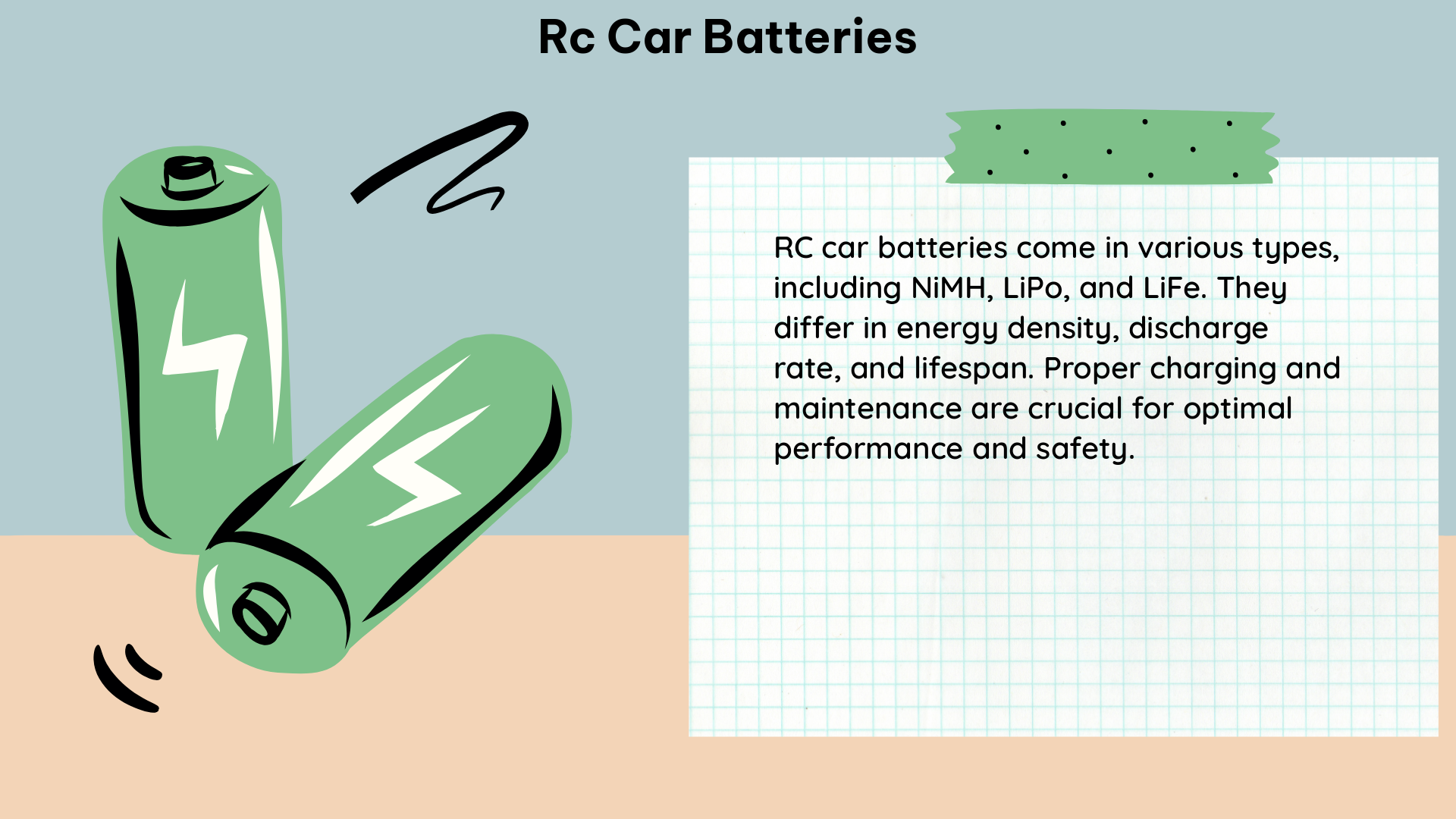RC car batteries are the lifeblood of remote-controlled vehicles, powering their motors, electronics, and driving their performance. Understanding the technical specifications of these batteries is crucial for optimizing the performance and longevity of your RC car. In this comprehensive guide, we’ll dive deep into the world of RC car batteries, exploring the key factors that determine their capabilities and how to choose the right battery for your needs.
Understanding C-Ratings: The Power Metric
The C-rating of an RC car battery is a crucial metric that measures the battery’s ability to safely discharge energy. This rating represents the maximum continuous discharge current the battery can provide, expressed as a multiple of the battery’s capacity (in ampere-hours or Ah). For example, a 5000mAh battery with an 80C rating can safely discharge up to 400 amps (5000mAh x 80C = 400A) continuously.
A higher C-rating indicates a battery’s ability to deliver more power, which is essential for high-performance RC cars. However, it’s important to match the C-rating to the specific needs of your car’s motor and electronic speed controller (ESC) to avoid overloading the system and potentially damaging the components.
Capacity and Voltage: Balancing Power and Runtime

The capacity of an RC car battery, measured in milliamp-hours (mAh), determines the amount of energy it can store and the runtime of your vehicle. Larger capacity batteries, such as 5000mAh or 6000mAh, will provide longer run times, but they also add more weight to the car, which can affect its handling and performance.
The voltage of the battery is another crucial factor, as it determines the power output and the compatibility with your car’s electronics. Most RC cars use either 7.4V (2S) or 11.1V (3S) LiPo batteries, with the higher voltage providing more power but also requiring more robust electronics to handle the increased voltage.
Internal Resistance (IR): The Efficiency Factor
Internal resistance (IR) is a measure of the battery’s resistance to the flow of electrical current, and it plays a significant role in the battery’s performance and efficiency. A lower IR indicates better performance and longer battery life, as less energy is lost to heat dissipation.
To optimize the performance of your RC car, it’s essential to choose a battery with a low IR. You can use a simple LiPo performance tool to input the IR value and obtain a recommended maximum current for that particular battery, ensuring you get the best possible performance.
Matching Batteries to Motors and ESCs
The correlation between the C-rating/discharge rate of LiPo batteries and the motors and ESCs used in your RC car is crucial. As a general rule, a higher-powered motor will require a battery with a higher C-rating to match its power demands.
For instance, a 6.5T motor may require a 50C battery, while a more powerful 4.5T motor may need a 100C battery. It’s important to consider both the constant and burst ratings of the battery, as the burst rating can provide additional power for short periods, such as during acceleration or high-speed maneuvers.
Maintaining Battery Health and Safety
Proper care and maintenance of your RC car batteries are essential for maximizing their performance and lifespan. This includes:
- Charging and Discharging: Always use a high-quality charger and follow the manufacturer’s recommended charging and discharging procedures to avoid overcharging or over-discharging the battery.
- Storage: Store your batteries in a cool, dry place, and avoid exposing them to extreme temperatures or direct sunlight, which can degrade their performance over time.
- Balancing: Regularly balance your LiPo batteries to ensure that all cells are charged to the same level, preventing imbalances that can lead to premature failure.
- Safety Precautions: Always handle LiPo batteries with care, as they can be a fire hazard if mishandled. Never leave a charging battery unattended, and follow all safety guidelines provided by the manufacturer.
Choosing the Right RC Car Battery
When selecting an RC car battery, consider the following factors:
- C-rating: Choose a battery with a C-rating that matches the power requirements of your car’s motor and ESC.
- Capacity: Determine the runtime you need and select a battery with the appropriate capacity, balancing power and weight.
- Voltage: Ensure the battery’s voltage is compatible with your car’s electronics.
- Internal Resistance: Opt for a battery with a low IR to maximize performance and efficiency.
- Brand and Quality: Invest in a reputable battery brand known for reliability and safety.
By understanding the technical specifications of RC car batteries and how they impact your vehicle’s performance, you can make informed decisions and unlock the full potential of your RC car.
References:
– Understanding LiPo Battery C-Ratings
– The Importance of Internal Resistance in LiPo Batteries
– Measuring LiPo Battery Internal Resistance
– Choosing the Right LiPo Battery for Your RC Car
– LiPo Battery Safety and Handling

The lambdageeks.com Core SME Team is a group of experienced subject matter experts from diverse scientific and technical fields including Physics, Chemistry, Technology,Electronics & Electrical Engineering, Automotive, Mechanical Engineering. Our team collaborates to create high-quality, well-researched articles on a wide range of science and technology topics for the lambdageeks.com website.
All Our Senior SME are having more than 7 Years of experience in the respective fields . They are either Working Industry Professionals or assocaited With different Universities. Refer Our Authors Page to get to know About our Core SMEs.